|
GREEK CHEESE - TIRI
They will eat it as it comes, raw, cooked, fried as Saganaki, fresh with fruit and honey or aged, plain or dressed. It is not just a food to have at the end of a meal. It is a food that is cherished, included on a regular basis in their diet. There are no fussy rules over when you should eat it, in which order of the meal or with or without other certain food groups. They unashamedly love their cheese and eat it with a passion. Greeks consume 12 kg of feta cheese per person per year, and a total of 25kg of cheese per person per year, far more than any other nation in the world.
A slab of feta drizzled with olive oil, is the original meze to go with a drink of Ouzo. Greek cheese makes ideal table cheese, to have as an appetizer or a snack with fruit and honey. Feta can be crumbled over Greek salad, added to stuffed vegetables, or omelette.
Cheese was easy for the average Greek farmer to make, it kept better than milk, was replenished regularly and was cheap. most often used from sheep and goats milk, animals which the average farmer would have kept.
Greece has a lot of different types of cheeses. There are many types, such as graviera and kefalotiri. Then, each of these cheeses, being made in different parts of Greece, have distinctly different flavours due to the climate and soil of the area they're from. You will sometimes find one type of Greek cheese known by a totally different name in the rest of Greece.
Here is a list of the most prominent and popular Greek cheeses. I'm sure this is not all of them, if you are in Greece, you will probably come across many more, depending on which area you are in.
AnthotirosThis cheese is made with either or a combination of sheep's and goats milk, with a small addition of cow's milk or cream. You can find two types of this cheese, fresh and dried. The fresh anthotiros is soft and mild, unsalted, a great cheese to be eaten on its own or with fruit and honey - often as a breakfast, and is also used as a filling for pies and pastries. Dried anthotiros is a hard cheese, with a rich taste and is ideal for grating or in cooking. FetaNot only is feta the most famous of Greek cheeses, it is one of the most popular cheeses worldwide for its use in salads and
other healthy, light meals. It has been dated back to Homer's time. Made from sheep's milk or mixed with up to 30% of goat's milk.
A soft, white cheese, feta is ripened and kept in brine for at least 2 months, before eating. It is then sold in containers in brine, which
helps to
keep it a little longer. It is a salty cheese, with a unique crumbly texture,
naturally very white. An extremely versatile cheese, use it as a table cheese, fried in saganaki, crumbled in Greek salad,
as part of a meze, in cheese
pies, or many other meals. Formaella ParnassosThis cheese is made with either sheep's or goat's milk or a mixture of both. Formaella Parnassos is a hard cheese with a rich, pleasant flavour. It is consumed as a table cheese. It will have been aged for at least three months before eating. GalotiriA cheese made from sheep's or goat's milk or mixed. One of the oldest traditional cheeses of Greece. Galotiri is soft enough to spread on bread with a rather tart, yet pleasant, refreshing taste. GravieraYou can find Graviera cheeses, labelled with the different regions of Greece they are from, most common are the ones from Crete and Naxos, each one having different tastes and textures. Some are made with cow's milk, others from sheep's milk, or a mixture of these with an addition of goat's milk as well. One of the most popular of Greek cheeses, they all produce a fairly hard cheese and generally have a rather nutty taste. Those from some regions are said to be quite salty, and others, such as the one from Crete can be much sweeter. The Graviera from Crete needs to be aged at least 5 months before eating. A versatile cheese, you can use it for grating over pasta meals, as they melt well, or for use in cooking, fried as in Saganaki or as a table cheese for appetizers and mezedes. KasseriThis is a semi-hard, sheep's milk or mix with goat's milk cheese. Kasseri has a mild tangy flavour, with an oily texture. Good to use grated on pasta meals, as a melted cheese in sandwiches or pizza, as a table cheese or in mezedes. KefalogravieraA traditional hard cheese of Greece, made from sheep's milk. This cheese is a mixture of the two popular cheeses - Kefalotiri and Graviera. It is left to ripen for at least 3 months before eating. Kefalograviera has a sharp taste with a unique rich aroma. A very versatile cheese, you can have it as a table cheese, fried, grated on pasta meals, or in cooking. KefalotiriMade from sheep's or goat's milk or a mixture of both, this cheese has a long history in Greece and is one of the most popular of Greek cheeses. It is ripened for at least three months before eating, which gives it a sharp aroma and a rich tangy taste. Kefalotiri is a very versatile cheese, you can use it grated over pasta, fried in saganaki, cooked and used in pastries. It is a great table cheese, ideal to eat on its own. It is slightly salty, but is creamier and more delicate in taste than Graviera or Kefalograviera. KopanistiThis can be made from sheep's, goat's, or cow's milk. It is exclusively made in the Cyclades Islands. Kopanisti is a soft, rich cheese, with an intense, almost peppery taste, similar to a blue cheese. It is consumed as a table cheese, ideal in mezedes with wine or ouzo, or baked in cheese pastries. LadotiriExclusively made in Mitilini on the island of Lesvos, Lathotiri is made from sheep's and goat's milk. It is also known as "Kefalaki" which means small head, due to its shape. This cheese is preserved in olive oil, sometimes up to 12 months, which is why it is called Ladotiri, ladi = oil, tiri = cheese. This gives it a strong, rich, slightly salty taste with a hard texture. ManouriThis is an unsalted soft white cheese, similar to cream cheese, made from sheep's or goat's milk or a mix of both. Manouri has the addition of cow's milk or cream. Manuri is sometimes made as a hard cheese, but is most popular as a soft cheese. MetsovoneProduced in the regions of Metsovo (Epirus), which is where it gets its name from, it is made from cow's milk, with a small addition of sheep or goat's milk. It is left to ripen for at least 3 months before consuming. Metsovone is one of the few smoked cheeses of Greece, a hard texture, with a reputation of an excellent quality table cheese. MizithraThis cheese is made from sheep's, goat's or cow's milk or a mixture of all. It has been made in Greece for thousands of years and is considered the original of all Greek whey cheeses. There are two forms of Mizithra, Fresh and Dried. Fresh Mizithra is like ricotta, either unsalted or lightly salted and is eaten within hours or days after it is made. Dried Mizithra is salted and aged until hard, making it ideal for use as grated cheese and in cooking. In Crete there are special pies and sweet tarts made with this cheese. If you love Greek cheese, check out this page, now you can buy all your favorite Greek cheeses, such as Kefalotiri, Mizithra, Kasseri, Kefalograviera, Feta and Manouri.
|





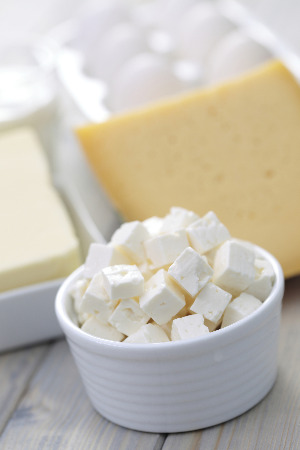 All Greeks adore Greek cheese - Tiri, they love to eat it at all times of the day, they will eat it on its own, as an
All Greeks adore Greek cheese - Tiri, they love to eat it at all times of the day, they will eat it on its own, as an 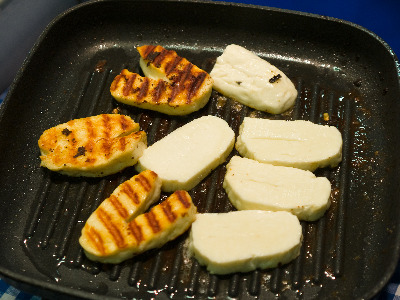 Greek cheese is fried, as in
Greek cheese is fried, as in 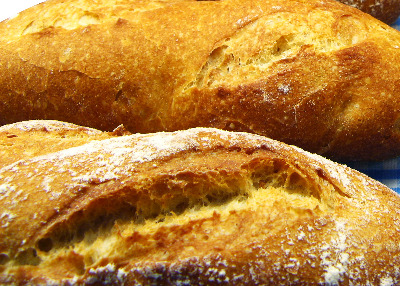 Due to the low consumption of animal meats, they were both expensive and of limited supply,
meat therefore played a less prominent role in
Greek cuisine. Cheese has replaced meat as a regular table food and a great source of protein, vitamins, amino acids and fat,
adding to its nutritional value.
Due to the low consumption of animal meats, they were both expensive and of limited supply,
meat therefore played a less prominent role in
Greek cuisine. Cheese has replaced meat as a regular table food and a great source of protein, vitamins, amino acids and fat,
adding to its nutritional value.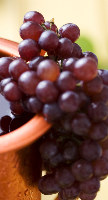 Greek whey
cheese has been dated back 4000 years ago, even Homer writes about how the Greek cheese was made.
Greek whey
cheese has been dated back 4000 years ago, even Homer writes about how the Greek cheese was made.
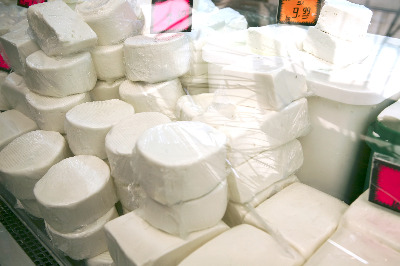 If you go to a cheese shop in Athens, you will find a section full with discs of graviera for instance -
each one with the name of the area or island they are from, everybody has their favourite, either because they are from that island or prefer
the taste of a particular one.
If you go to a cheese shop in Athens, you will find a section full with discs of graviera for instance -
each one with the name of the area or island they are from, everybody has their favourite, either because they are from that island or prefer
the taste of a particular one.
 Many Greek cheeses have earned protection under the European Union's PDO - Protected Denomination of Origin or are listed
under DOC - Controlled Denomination of Origin.
Many Greek cheeses have earned protection under the European Union's PDO - Protected Denomination of Origin or are listed
under DOC - Controlled Denomination of Origin.


New! Comments
Have your say about what you just read! Leave me a comment in the box below.